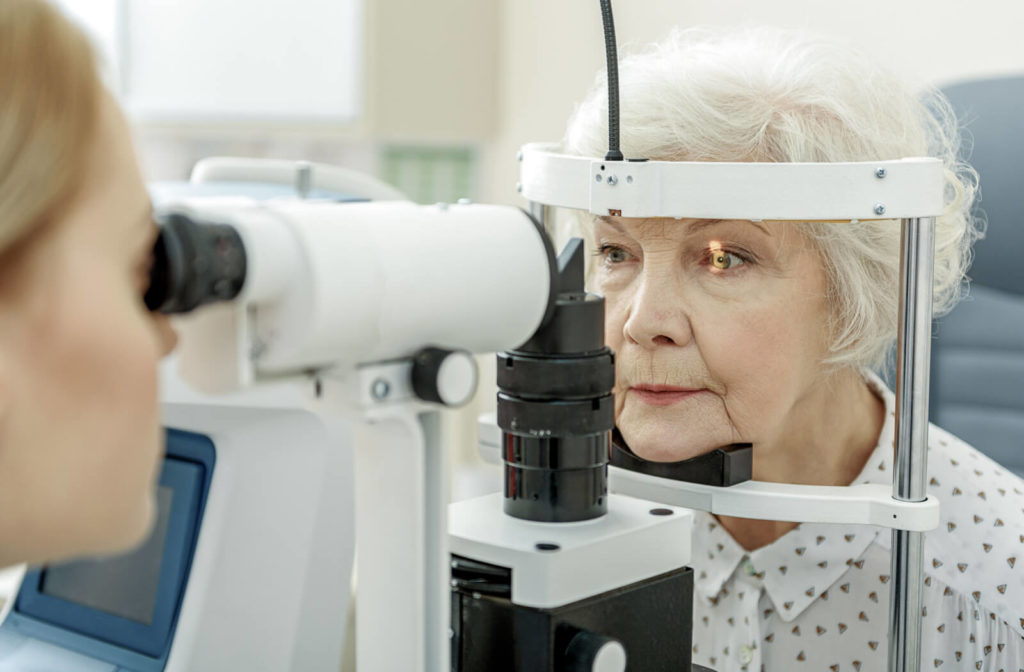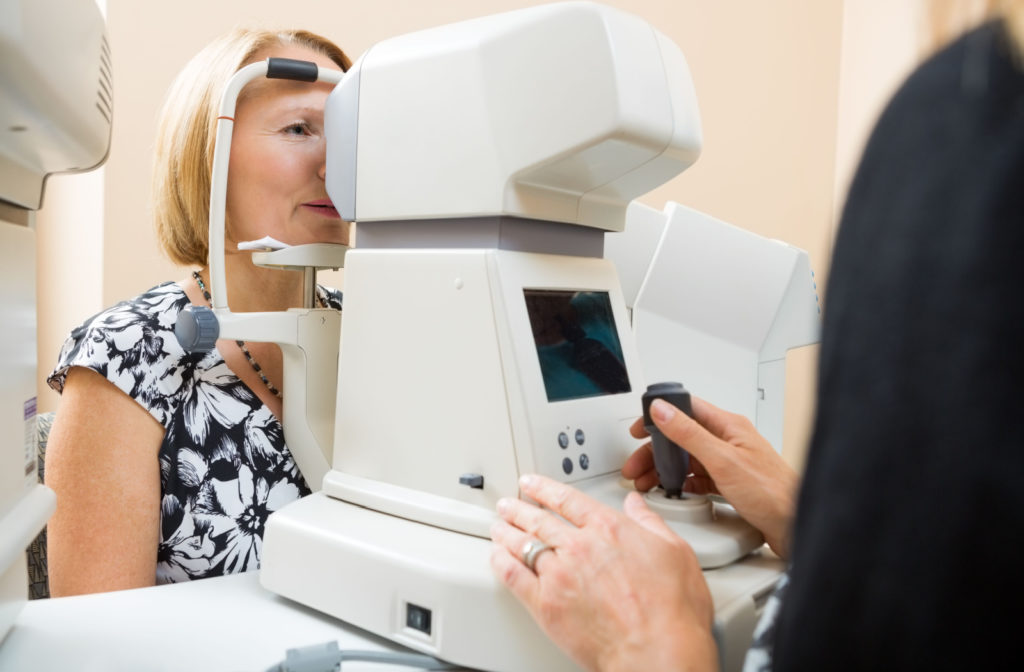When you visit your optometrist for a routine eye exam or have concerns about your vision, they usually perform several tests to check your eye health and look for early signs of vision problems.
One of the tests they might do is an air puff test. An air puff test can assess your eye health by measuring the pressure inside your eyes to screen for potential issues, such as glaucoma.
What Is an Air Puff Test?
An air puff test, also known as non-contact tonometry or air puff tonometry, is a non-invasive procedure used to measure intraocular pressure (IOP), which is the pressure inside your eye. The test involves aiming a gentle puff of air at the eye’s surface and then observing the eye’s response. Eye pressure is a key indicator for various eye conditions, notably glaucoma.
Link Between Eye Pressure & Glaucoma
Glaucoma is a group of eye diseases that causes damage to the optic nerve. Elevated intraocular pressure is believed to be the cause. When fluid in the eye can’t drain, it increases the pressure in the eye, which pushes against the optic nerve, causing damage.
What Is Glaucoma?
Glaucoma is often referred to as the “silent thief of sight” because there are no early symptoms. Regular eye exams, including pressure checks, are crucial for detecting and managing this condition to prevent vision loss.
Anyone can develop glaucoma. However, some factors can increase your risk, such as:
- Age
- Race
- Family history
- High fluid pressure
- Decreased corneal thickness
Types of Glaucoma
There are several types of glaucoma, including:
- Open-angle glaucoma: This is the most common type of glaucoma. People with high blood pressure or diabetes have a higher risk of developing open-angle glaucoma.
- Angle-closure glaucoma: This occurs when there is a sudden increase in eye pressure and is regarded as a medical emergency.
- Normal-tension glaucoma: This occurs in people with normal eye pressure.
- Congenital glaucoma: This occurs in babies when a problem with the eye prevents fluid from draining.
Symptoms of Glaucoma
Because glaucoma develops gradually, symptoms only become noticeable when an individual starts to lose vision. One of the first symptoms of glaucoma is loss of peripheral or side vision. After peripheral vision loss, it slowly affects central vision.
How the Air Puff Test Works
A tonometry machine is used for the air puff test. While you look into the machine, a puff of air is released.
When the air reaches the eye, it flattens the cornea. The amount of flattening depends on your eye pressure. Imagine your eye as a basketball. When holding a basketball filled with air, it is hard. However, it has more of a squishy feeling if it has leaked air. Your eye is similar, and the air detects how firm your eye is. The machine measures the eye pressure inside the eye. High eye pressure increases your risk of glaucoma. By regularly monitoring your IOP through this test, eye care professionals can detect abnormalities early on and intervene before vision loss occurs.
Benefits of the Air Puff Test
There are several benefits of the eye puff test.
Non-Invasive
One of the benefits of the air puff test is its non-invasive nature. Unlike some pressure tests, which involve numbing or touching the eye directly, this method is quick and generally easy.
Quick Procedure
The speed of the puff of air test is remarkable; from start to finish, the patient experiences a mere fraction of a second of air movement. Because of this, it’s a test preferred by both optometrists and patients for its efficiency and ease of use.
Widely Used in Optometry
The air puff test is a standard tool in most optometry offices due to its ability to provide valuable information without causing discomfort to the patient. It’s a significant part of monitoring eye health, particularly for individuals at high risk of glaucoma.
Screening for Glaucoma & Other Eye Conditions
As a screening tool, the puff of air test can help identify signs of glaucoma for effective management. This proactive approach to eye health means treatment can begin before significant vision loss occurs.
Encouraging Regular Eye Exams
While the puff of air test is essential to an eye exam, it’s not the only test for assessing eye health. Since normal-tension glaucoma presents with normal eye pressure, an eye exam is usually accompanied by other tests and diagnostic tools to form a comprehensive view of eye health.
Anyone aged between 18 and 64 years should have a regular eye exam every year. Your eye doctor may recommend a more frequent schedule based on your risk.

Catch Eye Disease Early
The air puff test can safeguard your vision and overall eye health by detecting signs of glaucoma to prevent vision impairment. It’s a quick test that can measure your eye pressure.
Contact Seal Beach Eyes for more information about the air puff test, and don’t forget to book an eye exam if you haven’t had one in the past year.



